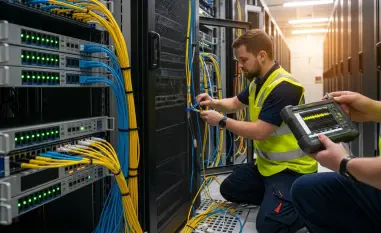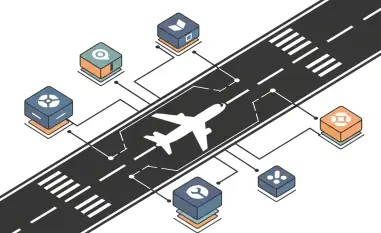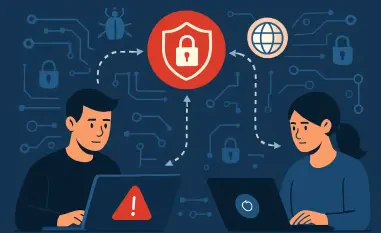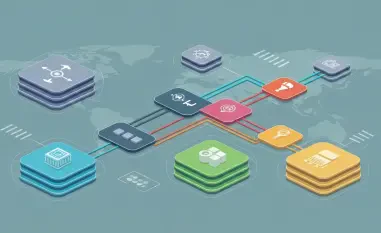In today’s interconnected global economy, businesses face an increasingly complex landscape of customs regulations, tariffs, and trade compliance requirements. This complexity arises due to rapidly changing legislation in response to political and socio-economic shifts. Efficiently navigating these challenges is critical to minimizing delays and reducing costs in international supply chains. This article delves into recent, upcoming, and potential changes to customs and international trade regulations, offering insights into how companies can adapt to maintain competitive and compliant supply chains.
The Importance of Regular Compliance Health Checks
Streamlining Customs Processes
With the intricate and ever-changing nature of global compliance requirements, it’s crucial for importers and exporters to develop strategies and implement technologies designed to streamline customs processes. Regular compliance health checks ensure regulatory compliance, optimize the movement of goods across borders, and help businesses stay ahead of evolving trade environments. This proactive approach is essential for maintaining competitive supply chains and mitigating risks associated with non-compliance.
Companies can leverage advanced digital solutions, such as automated customs clearance systems and AI-powered compliance tools, to enhance the efficiency and accuracy of their customs processes. These technologies enable real-time tracking of shipment statuses, automatic generation of required documentation, and prompt identification of potential compliance issues. By integrating these solutions, businesses can reduce the likelihood of delays at customs checkpoints and facilitate the seamless flow of goods across international borders.
Mitigating Risks and Reducing Costs
Regular compliance health checks not only help in staying compliant but also in identifying potential risks and areas where costs can be reduced. By regularly reviewing and updating compliance strategies, businesses can avoid penalties, reduce delays, and ensure smooth operations across international borders. This ongoing vigilance is key to maintaining a resilient and efficient supply chain.
In addition to minimizing the risk of non-compliance penalties, these health checks allow businesses to uncover inefficiencies in their supply chain operations. For example, reviewing tariff classifications and origin determinations can identify opportunities for duty savings, while analyzing shipping routes can reveal cost-effective alternatives. Adopting a proactive approach to compliance management not only enhances operational resilience but also provides a competitive edge in the global marketplace.
Changes in United States Tariffs and Customs Regulations
Recent Shifts in U.S. Tariff Structure
In recent years, there have been significant shifts in the U.S. tariff structure, driven by political and trade developments. These changes have impacted trade relations with key partners such as China, Japan, and the European Union. Many affected nations have responded by diversifying their export markets or challenging U.S. tariffs through the World Trade Organization. More recently, stricter customs requirements have been implemented for goods entering the U.S. with vague cargo descriptions or insufficient information, leading to potential rejection of customs entries.
The evolving tariff landscape has created a challenging environment for businesses relying on global supply chains. To navigate these changes, companies must stay informed about the latest tariff updates and assess their impact on cost structures and sourcing decisions. Developing contingency plans, such as identifying alternative suppliers or restructuring supply chains to mitigate tariff-related risks, can help businesses maintain continuity and minimize disruptions.
Stricter Customs Requirements and ACAS Enforcement
Since September 2024, the U.S. Customs & Border Protection (CBP) has enforced stringent standards for Air Cargo Advanced Screening (ACAS), requiring precise data to facilitate entry into or transit via the U.S. These measures aim to enhance security and ensure that all cargo entering the U.S. is properly documented and compliant with regulations. Businesses must adapt to these changes by ensuring accurate and detailed documentation for all shipments.
Compliance with ACAS requirements involves providing comprehensive data on the cargo, including detailed descriptions of the goods, shipper and consignee information, and transportation details. Failure to comply with these standards can result in delays, fines, or even the rejection of shipments. By investing in robust data management systems and training staff on the importance of accurate documentation, companies can ensure they meet CBP requirements and maintain the smooth flow of goods through U.S. ports of entry.
Implications of U.S. Political Changes on Tariffs and Controls
Proposed New Tariffs and Trade Relations
Following the recent U.S. presidential election, new tariffs have been proposed, impacting trade with Mexico, Canada, and China. Suggested tariffs include a 25% tariff on imports from Mexico and Canada and an additional 10% tariff on Chinese imports. Potential future actions could extend to the UK and Europe, adding further complexity to global supply chain planning involving the U.S.
Such tariff proposals necessitate a strategic response from businesses involved in international trade. Companies must analyze the potential financial impact of these tariffs on their operations and explore alternative sourcing options to mitigate cost increases. Additionally, engaging in advocacy efforts through industry associations and trade groups can help influence policy decisions and ensure that the business community’s concerns are voiced to policymakers.
Expanding Export Controls and Monitoring Critical Exports
Additional regulatory priorities include expanding export controls on advanced technologies, particularly semiconductor manufacturing equipment, and imposing stricter export license denials for goods involving China. Monitoring critical minerals and AI-related exports is also a focus. To mitigate the impact of these tariffs, manufacturers are encouraged to evaluate their supply chains for dependence on imports from countries subject to tariffs and explore alternative markets.
Businesses must closely monitor developments in export control regulations to ensure compliance and avoid potential disruptions. Implementing robust export control compliance programs, including staff training and regular audits, can help companies navigate these complex requirements. Additionally, leveraging trade compliance software to track and manage export licenses can streamline processes and reduce the risk of non-compliance.
The Lacey Act and Trade Compliance
Regulating U.S. Imports of Wildlife, Fish, and Plants
The Lacey Act, amended in 2008, plays a pivotal role in regulating U.S. imports of wildlife, fish, and plants, having profound impacts on the global trade of these products. By holding importers responsible for ensuring the legality of their sources, the Act has increased pressure on exporting countries to implement and enforce sustainable practices.
Compliance with the Lacey Act requires companies to conduct thorough due diligence on their supply chains to verify the legality of the sourced products. This involves tracing the origin of the goods, ensuring suppliers adhere to sustainable and legal practices, and maintaining detailed records of transactions. By adopting a comprehensive approach to supply chain transparency, businesses can demonstrate their commitment to ethical sourcing and avoid potential legal and reputational risks.
Importance of Understanding Product Laws and Regulations
This reinforces the importance of understanding product laws and regulations that govern global distribution, as these can change and differ by country. Businesses must stay informed about these regulations to ensure compliance and avoid potential legal and financial repercussions.
Staying updated on the latest trade compliance developments requires continuous monitoring of regulatory changes and active participation in industry forums and trade associations. By fostering strong relationships with regulatory bodies and leveraging expertise from trade compliance professionals, companies can navigate the complexities of global trade laws and maintain compliant operations. Investing in compliance training for employees ensures that all team members are aware of their roles and responsibilities in upholding regulatory standards.
ICS2 and Advanced Cargo Systems
Technological Advancements in EU Customs Processes
In the European Union, significant changes are underway in customs processes. The Import Control System 2 (ICS2) exemplifies technological advancements revolutionizing customs operations in the EU, Switzerland, and Norway. ICS2 mandates electronically submitted data to enhance security in international goods transportation.
The implementation of ICS2 requires businesses to provide detailed information on shipments, including sender and recipient details, consignment content, and transportation specifics. This digitalization of customs processes aims to improve supply chain transparency and facilitate faster and more efficient customs clearance. Companies exporting to the EU, Switzerland, and Norway must adapt their systems and processes to meet these new requirements, ensuring seamless integration with ICS2 and compliance with the enhanced data-sharing protocols.
Adapting to ICS2 Requirements
This includes sender and recipient details, consignment content, and shipment information. Companies exporting to these regions must adapt their processes to comply with ICS2 requirements, necessitating increased data sharing among importers, exporters, and supply chain service providers. This adaptation is crucial for maintaining smooth and compliant operations in the EU market.
To effectively comply with ICS2, businesses should invest in advanced logistics software that facilitates real-time data exchange and ensures accurate and timely submission of required information. Additionally, partnering with experienced customs brokers and logistics providers can help companies navigate the complexities of ICS2 compliance. Training staff on the new requirements and implementing robust internal processes for data validation and submission are also essential steps to maintain compliance and avoid disruptions in the supply chain.
EU Carbon Border Adjustment Mechanism
Introduction of CBAM and Its Implications
The European Union introduced the Carbon Border Adjustment Mechanism (CBAM) in 2023, representing a significant development in global trade policy. This mechanism establishes a carbon tariff on imports of carbon-intensive products such as steel, cement, aluminum, and fertilizer into the EU. By 2026, CBAM will require importers to purchase and surrender CBAM certificates corresponding to the embedded emissions of their imported goods.
This effectively imposes a carbon price on these imports, aiming to level the playing field for European producers facing stricter emissions regulations. Businesses must prepare for these changes to avoid disruptions and additional costs by focusing on carbon data traceability throughout their supply chain into the EU.
Given the stringent requirements under CBAM, companies need to develop comprehensive carbon accounting systems to accurately measure and report the emissions embedded in their products. This may involve collaborating with suppliers to collect emission data and investing in technologies that facilitate traceability and transparency across the supply chain. Additionally, businesses should explore opportunities to reduce the carbon footprint of their operations and products to minimize the financial impact of CBAM and enhance sustainability credentials.
Preparing for Increased Compliance Enforcement
New trade structures and regulations lead to a heightened focus on compliance enforcement. Customs authorities are implementing stricter measures to ensure fair trade practices, protect national security, and collect appropriate revenues. Many countries are investing in increased customs staffing and audit capabilities to address non-compliance. In the UK, HM Revenue and Customs are employing 5,000 extra compliance officers, while Customs and Border Protection in the USA are also targeting an increase in border enforcement staffing. Increased scrutiny will be focused on tariff classification, valuation, and origin, requiring companies to prepare for more frequent and stringent checks in these areas.
Companies must proactively enhance their compliance programs to meet the heightened enforcement standards. This may involve conducting internal audits to verify the accuracy of tariff classifications, valuations, and origin declarations. Leveraging trade compliance software can streamline these processes and ensure that all relevant data is accurately recorded and submitted. Businesses should also engage with customs authorities and stay informed about emerging enforcement trends to anticipate potential challenges and adapt their compliance strategies accordingly.
Enhancing Internal Compliance Programs
To effectively manage increased compliance enforcement, companies should invest in robust internal compliance programs. This includes appointing dedicated compliance officers, implementing comprehensive training programs, and establishing clear procedures for managing customs documentation and reporting. By fostering a culture of compliance within the organization, businesses can proactively address potential issues and ensure adherence to regulatory requirements.
Moreover, establishing strong relationships with customs authorities and engaging in dialogue can provide valuable insights into enforcement priorities and expectations. Regularly reviewing and updating internal compliance policies and procedures based on regulatory changes and enforcement trends can help businesses stay ahead of potential issues. Additionally, leveraging external expertise from trade compliance consultants can offer guidance and support in navigating complex regulatory landscapes.
Looking Ahead: Adapting to Evolving Regulations
Global governments are expected to continually assess and adapt regulations in response to various factors such as environmental concerns, technological advancements, and geopolitical tensions. Key areas of focus include:
Green Trade and Sustainability Initiatives
Environmental concerns are driving green trade policies that incentivize sustainable practices, such as carbon border taxes, sustainable supply chain certifications, and reduced tariffs for environmentally friendly products. Businesses must adapt to these standards to remain competitive and compliant.
Data Transparency and Digitalization
Advancements in digital technologies, including blockchain, AI, and cloud-based platforms, are enhancing border security, reducing fraud, and streamlining customs processes. Companies need to invest in digital readiness and data-sharing capabilities to navigate these customs smoothly.
Ethical Sourcing Standards and Regional Trade Agreements
Heightened scrutiny around human rights violations has led to stricter sourcing regulations. Governments are implementing import bans on goods linked to unethical practices, requiring companies to demonstrate robust supply chain due diligence and ethical sourcing standards.
The continually evolving global trade landscape, with updates to regional agreements such as the CPTPP and USMCA, requires businesses to adapt their strategies to align with shifting trade dynamics.
Increased Customs Audits and Enforcements
Customs authorities are ramping up audits and enforcement actions to ensure compliance with trade regulations. Businesses face greater scrutiny on valuation, classification, and adherence to trade agreements, emphasizing the need for strong internal compliance programs.
Tariff Adjustments and Retaliatory Tariffs
Geopolitical tensions continue to influence tariff policies, with countries implementing or adjusting tariffs in response to trade disputes. Businesses must stay agile, monitoring developments and adjusting their pricing, sourcing, and supply chain strategies to mitigate risks and costs.
Conclusion
In the interconnected global economy of today, businesses must navigate an increasingly complicated landscape of customs regulations, tariffs, and trade compliance requirements. This complexity is driven by swiftly changing laws in response to political and socio-economic developments. Effectively managing these challenges is vital to avoid delays and cut costs in international supply chains.
This article will explore recent, upcoming, and potential changes in customs and international trade regulations. Understanding these shifts can help companies remain competitive and compliant. As global trade evolves, businesses must stay informed about legislative updates to adjust their operations accordingly.
For instance, changes in tariff rates can impact the cost of goods dramatically, while new trade agreements can either open up opportunities or create roadblocks. Meanwhile, regulatory compliance has become even more stringent, demanding meticulous documentation and adherence to international standards. Companies with a proactive approach to these adjustments are more likely to maintain a smooth flow of goods across borders.
In summary, staying updated on the latest customs and trade regulations is no longer optional for businesses involved in global trade. By keeping an eye on legislative shifts and adapting their strategies, companies can ensure their supply chains remain efficient and compliant.













